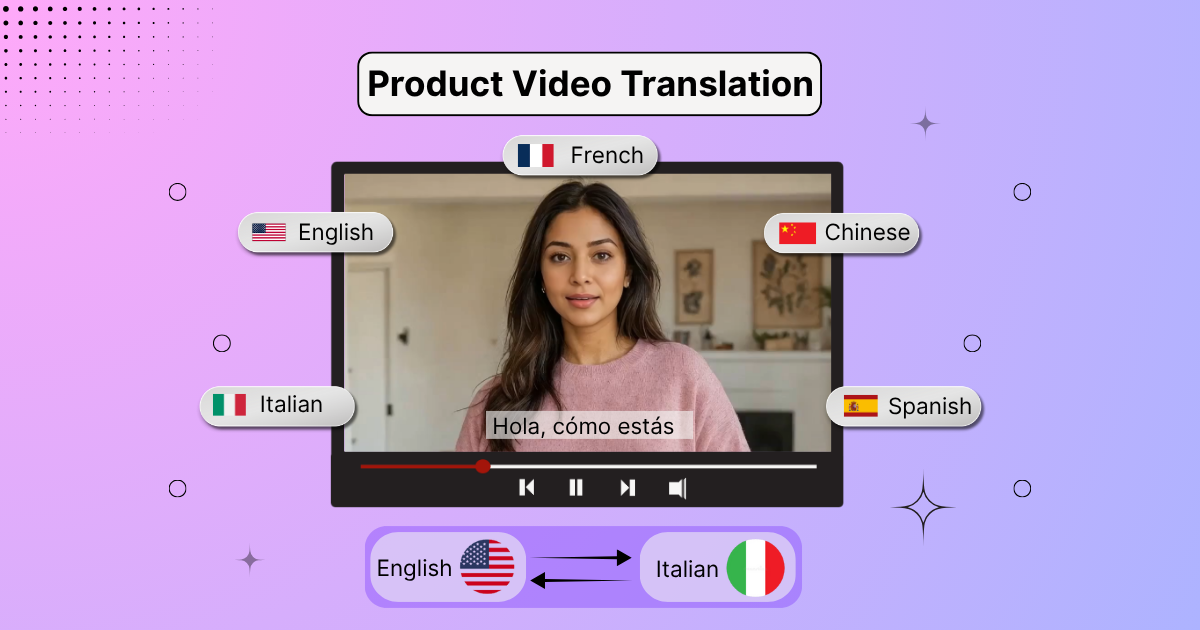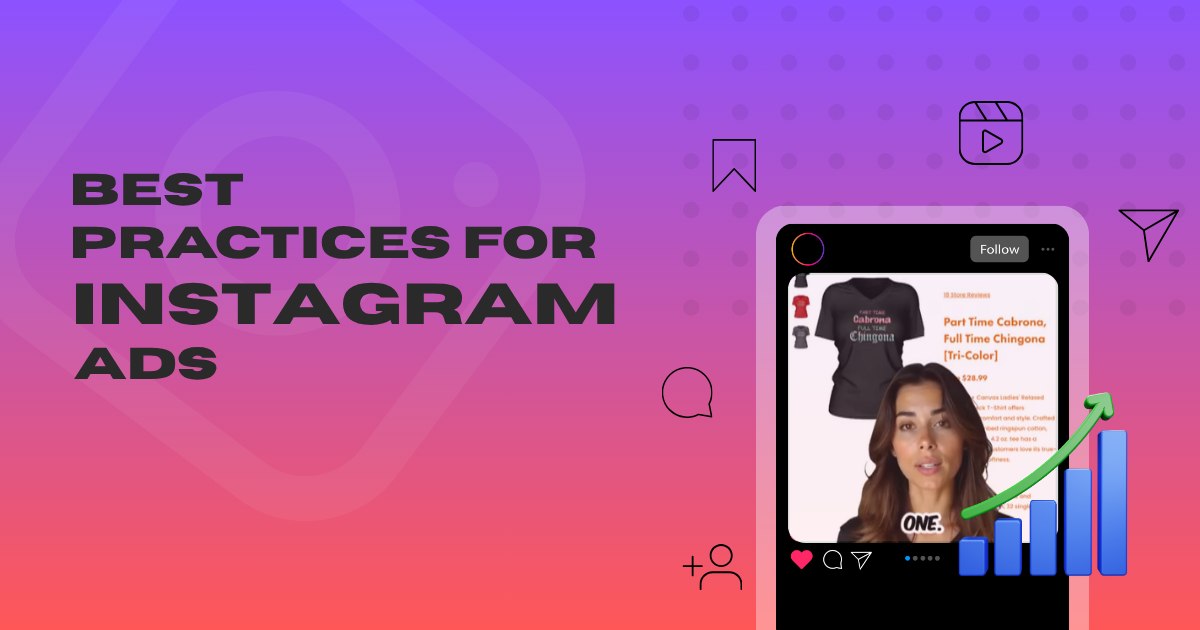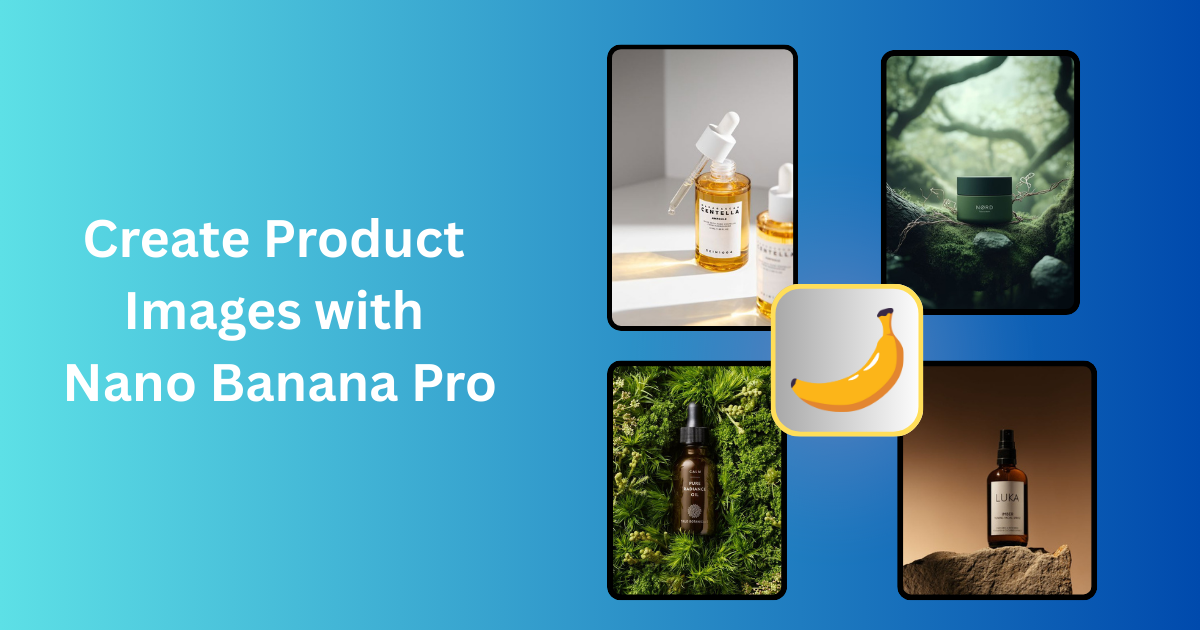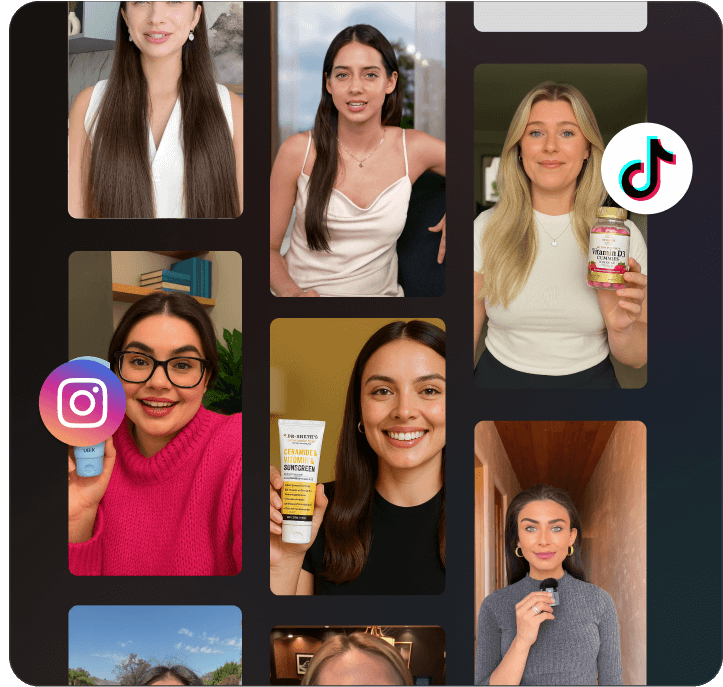Best Ways to Translate Product Videos into Any Language
The Internet can take your brand global, reaching audiences beyond geographical boundaries. However, language can be a barrier in attracting audiences, making it essential to translate product videos into any language.
Using translated product videos can be very effective, as 76% of people are more likely to make a purchase when product information is presented in their native language (CSA Research). Let’s take a deep dive into the topic to discover why your brand needs to translate product videos and how you can generate them.
Why Translate Your Product Videos?
Localized videos can boost engagement by a jaw-dropping 91%. Along with that reason, here are some other reasons why you should translate product videos.
1. Connect with Global Audiences
For instance, a new gadget video is blowing up in the U.S., but what about Brazil or Japan? Translating those product videos and chats with people in their own language, making the brand feel like that friendly neighbor down the street. A skincare brand can spotlight ingredients that locals in Spain, Mexico, or Argentina really vibe with. It’s like giving the audience a warm, cultural hug that feels just right.
2. Boost Local SEO and Visibility
Localized content is like a magic trick. Translated titles, descriptions, and subtitles easily sync up with regional search algorithms, all at once. When you localize content, it not only helps you to get your rank in the US, but also in other countries.
Use local languages so swap “Best Skincare Routine” for something like “Mejor Rutina de Cuidado de la Piel,” and watch the clicks roll in from Spanish-speaking nations. It’s like handing a megaphone to the video to grab global attention.
3. Build Trust with Local Flair
Language is an integral part of culture, so when you adopt the language of a region, it demonstrates your acknowledgment of their culture. When you do it, you make steps in building trust. People usually trust videos that are in their language.
4. Saves Cost
If you want to generate video in a local language, then you might have to reshoot everything, and we can agree that it can incur significant costs. Using tools, you can translate the same video into different languages, saving on the cost.
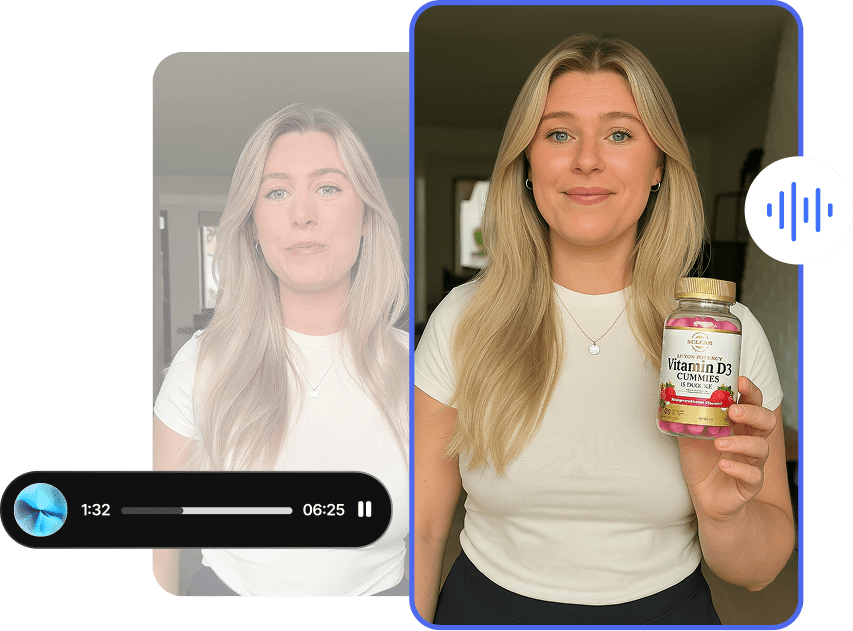
Best Methods to Translate Product Videos
Ready to make your videos multilingual? Here are the top ways to do it, with pros, cons, and my personal take on what works best.
Method 1: Translated Scripts with Native AI Avatars
Generate a script in Spanish, Italian, or any other language, and combine it with your desired avatar speaking it. Dubbing tools might fail to match the lip-sync ,but with these,you get perfect lip sync of the desired language.
How It Works: These tools shape a digital figure that lip-syncs to a translated script, delivering a voice that feels local and warm. Imagine a virtual host unveiling a product in Mandarin, Portuguese, or Arabic, all from one video.
Tagshop AI: Generate UGC-Style Videos in 20+ Languages
Tagshop AI is a powerful AI tool that lets you generate high-quality product videos in multiple languages—instantly and effortlessly. Simply paste your product URL, and Tagshop AI pulls product data to create engaging videos using realistic AI avatars.
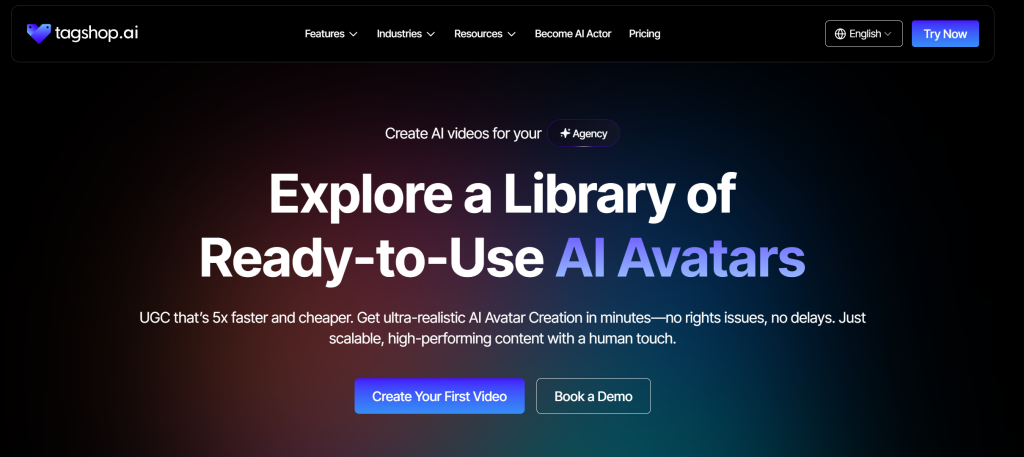
What makes it even more powerful?
✔️ Multi-language support: You can create videos in English, Spanish, German, French, Hindi, and more, helping you connect with global customers.
✔️ No editing needed: Just provide your link, choose your language, and get a ready-to-use video.
✔️ Localize your marketing: Speak your customer’s language and boost engagement across different regions.
Perfect for eCommerce brands, marketers, and agencies looking to scale their product videos for different countries without spending time or budget on traditional video shoots.
Pros:
- Modern and Eye-Catching: Avatars bring a fresh, forward-looking vibe that hooks social media users.
- Cost-Effective: They beat hiring human actors for multiple languages on price.
- Highly Scalable: Dozens of language versions roll out without reshooting footage.
Cons:
- Source Material Matters: A top-notch content is crucial for videos to shine.
Best For: Paid ads, explainer videos, or e-commerce shops chasing a modern edge.
Pro Tip: Match the avatar’s style to the brand, crisp and professional for B2B, or playful for consumer goods, and try out a few looks to see what wins over the crowd.

Method 2: Hire a Creator for Voice Dubbing
When a video needs to strike a deep emotional chord, a human voice stands above the rest. It’s like the difference between a store-bought cake and one baked with love by a grandma; there’s a soul in it.

How It Works: This taps professional voice actors to record a translated script, matching the original video’s vibe, speed, and energy. Take a lively U.S. ad; a Spanish actor can bring that same spark to an Argentine crowd.
Platforms:
- Voices.com: A bustling marketplace linking creators with voice talent in any language, complete with demo clips to find the right fit.
- Fiverr: A budget-friendly hub where freelancers offer voiceovers in many tongues, with startups spotting great voices for just $50 a job.
Pros:
- Emotional Connection: Humans nail the subtleties of laughter, warmth, or urgency, making them ideal for stories or ads that tug at the heart.
- Premium Feel: A human voice adds a touch of class, perfect for luxury brands or cinematic campaigns.
Cons:
- Pricey: Expect fees from $100 to $500 per minute, depending on the actor and project, which can add up for longer clips.
- Time-Intensive: Recording, editing, and syncing can stretch over days or weeks, unlike AI’s quick turnarounds.
Best for: Luxury brands, cinematic product launches, or campaigns where heartfelt authenticity is essential.
Pro Tip: Choose native speakers to perfect accents and cultural nuances that a British voice might not convey in Australia, where local slang holds significant weight.

Key Elements of Video Translation
Keep in mind that translating a video isn’t just about words. It’s a puzzle with a few critical pieces to make the final product feel seamless:
1. Audio (Voiceover or Dubbing)
This is the voice of your video. Whether you’re replacing the narration with a new language or dubbing over the original, it’s gotta sound natural and sync perfectly with the visuals. With more clarity in voice in translation, more people can relate to your content, which can help you in getting the desired results.
2. On-Screen Text/Graphics
Got product names, prices, or text overlays? Those need translating too. And sometimes, you’ll need to tweak fonts or layouts to fit languages like Japanese or Arabic. Keep in mind that you are making content for the audience and potential customers, so make your content for their understanding. Keep yourself in their point of view, and make texts as understandable to them as possible.
3. Captions and Subtitles
These are your text backups. It can happen that the audience watching your video might be viewing it on mute, and captions and subtitles work perfectly for that scenario. Subtitles and texts also make the product video understandable for viewers with hearing impairments. They need to be spot-on and culturally relevant.
4. Cultural Nuance and Tone
A joke that lands in the U.S. might flop in Germany. Each region has its own context and its own trend. Localization involves adjusting humor, idioms, or references to make your video feel like it belongs in the target culture.
Best Practices for Video Translation
To make your translated videos shine, keep these tips in mind:
- Use Native-Sounding Voices or Accents: A robotic or off-base accent can break the spell. Always aim for authenticity.
- Tweak CTAs, Currency, and References: Swap dollars for euros, or mention local holidays to feel relevant.
- Keep Audio and Visuals in Sync: Lip-sync issues or mismatched text can distract viewers.
- Test for Engagement: Run A/B tests to see which translated versions resonate most with your audience.
Conclusion
Translating product videos isn’t just about changing the language; it’s about making your audience feel seen and understood. It opens gates for your brand to reach global audiences from all over the world. Audiences feel related to the content, and can become your loyal customers. So, what are you waiting for? Start localizing your videos and watch your brand connect with the world!

